Exercise-based cardiac rehabilitation for adults with atrial fibrillation
- PMID: 39287086
- PMCID: PMC11406592
- DOI: 10.1002/14651858.CD011197.pub3
Exercise-based cardiac rehabilitation for adults with atrial fibrillation
Abstract
Background: Atrial fibrillation (AF), the most prevalent cardiac arrhythmia, disrupts the heart's rhythm through numerous small re-entry circuits in the atrial tissue, leading to irregular atrial contractions. The condition poses significant health risks, including increased stroke risk, heart failure, and reduced quality of life. Given the complexity of AF and its growing incidence globally, exercise-based cardiac rehabilitation (ExCR) may provide additional benefits for people with AF or those undergoing routine treatment for the condition.
Objectives: To assess the benefits and harms of ExCR compared with non-exercise controls for people who currently have AF or who have been treated for AF.
Search methods: We searched the following electronic databases: CENTRAL in the Cochrane Library, MEDLINE Ovid, Embase Ovid, PsycINFO Ovid, Web of Science Core Collection Thomson Reuters, CINAHL EBSCO, LILACS BIREME, and two clinical trial registers on 24 March 2024. We imposed no language restrictions.
Selection criteria: We included randomised clinical trials (RCTs) that investigated ExCR interventions compared with any type of non-exercise control. We included adults 18 years of age or older with any subtype of AF or those who had received treatment for AF.
Data collection and analysis: Five review authors independently screened and extracted data in duplicate. We assessed risk of bias using Cochrane's RoB 1 tool as outlined in the Cochrane Handbook for Systematic Reviews of Interventions. We assessed clinical and statistical heterogeneity by visual inspection of the forest plots and by using standard Chi² and I² statistics. We performed meta-analyses using random-effects models for continuous and dichotomised outcomes. We calculated standardised mean differences where different scales were used for the same outcome. We used the GRADE approach to assess the certainty of the evidence.
Main results: We included 20 RCTs involving a total of 2039 participants with AF. All trials were conducted between 2006 and 2024, with a follow-up period ranging from eight weeks to five years. We assessed the certainty of evidence as moderate to very low. Five trials assessed comprehensive ExCR programmes, which included educational or psychological interventions, or both; the remaining 15 trials compared exercise-only cardiac rehabilitation with controls. The overall risk of bias in the included studies was mixed. Details on random sequence generation, allocation concealment, and use of intention-to-treat analysis were typically poorly reported. Evidence from nine trials (n = 1173) suggested little to no difference in mortality between ExCR and non-exercise controls (risk ratio (RR) 1.06, 95% confidence interval (CI) 0.76 to 1.49; I² = 0%; 101 deaths; low-certainty evidence). Based on evidence from 10 trials (n = 825), ExCR may have little to no effect on SAEs (RR 1.30, 95% CI 0.63 to 2.67; I² = 0%; 28 events; low-certainty evidence). Evidence from four trials (n = 378) showed that ExCR likely reduced AF recurrence (measured via Holter monitoring) compared to controls (RR 0.70, 95% CI 0.56 to 0.88; I² = 2%; moderate-certainty evidence). ExCR may reduce AF symptom severity (mean difference (MD) -1.59, 95% CI -2.98 to -0.20; I² = 61%; n = 600; low-certainty evidence); likely reduces AF symptom burden (MD -1.61, 95% CI -2.76 to -0.45; I² = 0%; n = 317; moderate-certainty evidence); may reduce AF episode frequency (MD -1.29, 95% CI -2.50 to -0.07; I² = 75%; n = 368; low-certainty evidence); and likely reduces AF episode duration (MD -0.58, 95% CI -1.14 to -0.03; I² = 0%; n = 317; moderate-certainty evidence), measured via the AF Severity Scale (AFSS) questionnaire. Moderate-certainty evidence from six trials (n = 504) showed that ExCR likely improved the mental component summary measure in health-related quality of life (HRQoL) of the 36-item Short Form Health Survey (SF-36) (MD 2.66, 95% CI 1.22 to 4.11; I² = 2%), but the effect of ExCR on the physical component summary measure was very uncertain (MD 1.75, 95% CI -0.31 to 3.81; I² = 52%; very low-certainty evidence). ExCR also may improve individual components of HRQoL (general health, vitality, emotional role functioning, and mental health) and exercise capacity (peak oxygen uptake (VO2peak) and 6-minute walk test) following ExCR. The effects of ExCR on serious adverse events and exercise capacity were consistent across different models of ExCR delivery: centre compared to home-based, exercise dose, exercise only compared to comprehensive programmes, and aerobic training alone compared to aerobic plus resistance programmes. Using univariate meta-regression, there was evidence of significant association between location of trial and length of longest follow-up on exercise capacity.
Authors' conclusions: Due to few randomised participants and typically short-term follow-up, the impact of ExCR on all-cause mortality or serious adverse events for people with AF is uncertain. ExCR likely improves AF-specific measures including reduced AF recurrence, symptom burden, and episode duration, as well as the mental components of HRQoL. ExCR may improve AF symptom severity, episode frequency, and VO2peak. Future high-quality RCTs are needed to assess the benefits of ExCR for people with AF on patient-relevant outcomes including AF symptom severity and burden, AF recurrence, AF-specific quality of life, and clinical events such as mortality, readmissions, and serious adverse events. High-quality trials are needed to investigate how AF subtype and clinical setting (i.e. primary and secondary care) may influence ExCR effectiveness.
Copyright © 2024 The Cochrane Collaboration. Published by John Wiley & Sons, Ltd.
Conflict of interest statement
Benjamin Buckley: has received research funding from Bristol Myers Squibb (BMS) and Pfizer outside of this work.
Linda Long: none known.
Signe Risom: received travel funds from Boston Scientific Corporation to attend European Society of Cardiology annual meeting in Amsterdam.
Deirdre Lane: has received investigator‐initiated educational grants from BMS and Pfizer; has been a speaker for Bayer, Boehringer Ingelheim, and BMS/Pfizer; and has consulted for BMS and Boehringer Ingelheim, all outside the submitted work.
Selina Berg: none known.
Christian Gluud: is a Cochrane editor and was not involved in the editorial process.
Pernille Palm: has received speaker fees from Boehringer Ingelheim and Novartis.
Kirstine Sibilitz: none known.
Jesper Svendsen: has received institutional research grants from European Union (Horizon 2020 and EUROSTARS), Innovation Fund Denmark, and Medtronic; Speaker fees from Medtronic; and Honorarium for membership of Advisory Boards in Medtronic and Vital Beats.
Ann‐Dorthe Zwisler: none known.
Gregory Lip: is a consultant and speaker for BMS/Pfizer, Boehringer Ingelheim, Daiichi‐Sankyo, Anthos. No fees are received personally. He is a National Institute for Health and Care Research (NIHR) Senior Investigator.
Lis Neubeck: has received research funding from Daiichi Sankyo Company.
Rod Taylor: none known.
Figures
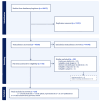
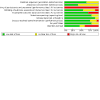
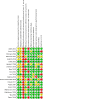
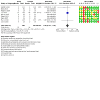

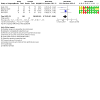
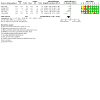
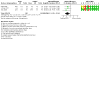
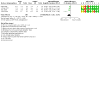


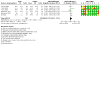
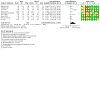

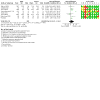
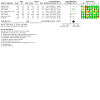
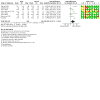
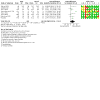
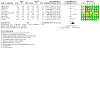
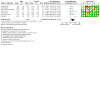
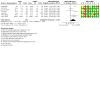
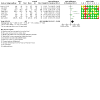
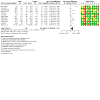
Update of
-
Exercise-based cardiac rehabilitation for adults with atrial fibrillation.Cochrane Database Syst Rev. 2017 Feb 9;2(2):CD011197. doi: 10.1002/14651858.CD011197.pub2. Cochrane Database Syst Rev. 2017. Update in: Cochrane Database Syst Rev. 2024 Sep 17;9:CD011197. doi: 10.1002/14651858.CD011197.pub3. PMID: 28181684 Free PMC article. Updated.
References
References to studies included in this review
Abed 2013 {published data only}
-
- Abed HS, Wittert GA, Leong DP, Shirazi MG, Bahrami B, Middeldorp ME, et al. Effect of weight reduction and cardiometabolic risk factor management on symptom burden and severity in patients with atrial fibrillation: a randomized clinical trial. JAMA 2013;310:2050-60. - PubMed
Alves 2022 {published data only}
-
- Alves LS, Bocchi EA, Chizzola PR, Castro RE, CuriSalemi V, Melo MD, et al. Exercise training in heart failure with reduced ejection fraction and permanent atrial fibrillation: A randomized clinical trial. Heart Rhythm 2022;19:1058-66. - PubMed
Bittman 2022 {published data only}
Bubnova 2022 {published data only}
-
- Bubnova MG, Aronov DM, Makhinova MM, Davtyan KV. Clinical efficacy of a personalized exercise program in the rehabilitation of patients with atrial fibrillation after radiofrequency ablation. Russian Journal of Cardiology 2022;27:5098.
DeWith 2019 {published data only}
-
- De With RR, Rienstra M, Smit MD, Weijs B, Zwartkruis VW, Hobbelt AH, et al. Targeted therapy of underlying conditions improves quality of life in patients with persistent atrial fibrillation: results of the RACE 3 study. Europace 2019;21:563-71. - PubMed
Elliot 2023 {published data only}
-
- Elliott AD, Verdicchio CV, Mahajan R, Middeldorp ME, Gallagher C, Mishima RS, et al. An exercise and physical activity program in patients with atrial fibrillation. Journal of the American College of Cardiology: Clinical Electrophysiology 2023;9:455-65. - PubMed
Hegbom 2006 {published data only}
-
- Hegbom F, Sire S, Heldal M, Orning OM, Stavem K, Gjesdal K. Short-term exercise training in patients with chronic atrial fibrillation: effects on exercise capacity, AV conduction, and quality of life. Journal of Cardiopulmonary Rehabilitation 2006;26(1):24-9. - PubMed
-
- Hegbom F, Stavem K, Sire S, Heldal M, Orning OM, Gjesdal K. Effects of short-term exercise training on symptoms and quality of life in patients with chronic atrial fibrillation. International Journal of Cardiology 2007;116(1):86-92. - PubMed
Joenson 2019 {published data only}
-
- Joensen AM, Dinesen PT, Svendsen LT, Hoejberg TK, Fjerbaek A, Andreasen J, et al. Effect of patient education and physical training on quality of life and physical exercise capacity in patients with paroxysmal or persistent atrial fibrillation: a randomised study. Journal of Rehabilitation Medicine 2019;18:442–50. - PubMed
Kato 2019 {published data only}
-
- Kato M, Ogano M, Mori Y, Kochi K, Morimoto D, Kito K, et al. Exercise-based cardiac rehabilitation for patients with catheter ablation for persistent atrial fibrillation: A randomized controlled clinical trial. European Journal of Preventive Cardiology 2019;26:1931-40. - PubMed
Kim 2023 {published data only}
Luo 2019 {published data only}
Malmo 2016 {published data only}
-
- Malmo V, Nes BM, Amundsen BH, Tjonna AE, Stoylen A, Rossvoll O, et al. Aerobic interval training reduces the burden of atrial fibrillation in the short term: a randomized trial. Circulation 2016;133(5):466-73. - PubMed
Nourmohammadi 2019 {published data only}
Osbak 2011 {published data only}
-
- Osbak PS, Mourier M, Henriksen JH, Kofoed KF, Jensen GB. Effect of physical exercise training on muscle strength and body composition, and their association with functional capacity and quality of life in patients with atrial fibrillation: a randomized controlled trial. Journal of Rehabilitation Medicine 2012;44(11):975-9. [DOI: 10.2340/16501977-1039] - DOI - PubMed
Pippa 2007 {published data only}
-
- Pippa L, Lamberto M, Corti I, Congedo G, Romanazzi L, Parruti G. Functional capacity after traditional Chinese medicine (Qi Gong) training in patients with chronic atrial fibrillation: a randomized controlled trial. Preventive Cardiology 2007;10(1):22-5. - PubMed
Risom 2020 {published data only}
-
- Risom SS, Zwisler AD, Sibilitz KL, Rasmussen TB, Taylor RS, Thygesen LC, et al. Cardiac rehabilitation for patients treated for atrial fibrillation with ablation has long-term effects: 12-and 24-month follow-up results from the randomized CopenHeartRFA trial. Archives of Physical Medicine and Rehabilitation 2020;101:1877-86. - PubMed
Wahlstrom 2017 {published data only}
-
- Wahlstrom M, Karlsson MR, Medin J, Frykman V. Effects of yoga in patients with paroxysmal atrial fibrillation - a randomized controlled study. European Journal of Cardiovascular Nursing 2017;16:57-63. - PubMed
Wahlstrom 2020 {published data only}
-
- Wahlström M, Rosenqvist M, Medin J, Walfridsson U, Rydell-Karlsson M. MediYoga as a part of a self-management programme among patients with paroxysmal atrial fibrillation - a randomised study. European Journal of Cardiovascular Nursing 2020;19:74-82. - PubMed
Wu 2022 {published data only}
-
- Wu Y, Lin J, Gong B, Wang L, Ruan Z, Xu K. Cardiac rehabilitation in atrial fibrillation patients with left atrial appendage occlusion. Journal of Cardiopulmonary Rehabilitation and Prevention 2022;42:266-71. - PubMed
Zeren 2016 {published data only}
-
- Zeren M, Demir R, Yigit Z, Gurses HN. Effects of inspiratory muscle training on pulmonary function, respiratory muscle strength and functional capacity in patients with atrial fibrillation: a randomized controlled trial. Clinical Rehabilitation 2016 [Epub ahead of print 2016 January 27];30(12):1165-74. [DOI: 10.1177/0269215515628038] - DOI - PubMed
References to studies excluded from this review
Abed 2015 {published data only}
-
- Abed HS, Nelson AJ, Richardson JD, Worthley SG, Vincent A, Wittert GA, et al. Impact of weight reduction on pericardial fat volume and cardiac structure: implications for atrial fibrillation in a randomized clinical trial. European Heart Journal 2015;36:683‐84. - PubMed
Angergard 2015 {published data only}
-
- Angergard K. The effects of physical activity in patients with persistent atrial fibrillation. Physiotherapy 2015;101(Suppl 1):e78-9.
Aoyama 2021 {published data only}
-
- Aoyama D, Miyazaki S, Hasegawa K, Nagao M, Kakehashi S, Mukai M, et al. Cardiac rehabilitation after catheter ablation of atrial fibrillation in patients with left ventricular dysfunction. Heart and Vessels 2021;36:1542-50. - PubMed
Baek 2019 {published data only}
-
- Baek YS, Park JH, Yoon GS, Choi SH, Park SD, Kwon SW, et al. Impact of tailored cardiac rehabilitation on clinical outcome after catheter ablation in patients with atrial fibrillation: a single center, prospective, randomized clinical trial. Journal of Arrhythmia 2019;35:158.
Bao 2019 {published data only}
-
- Bao Z. Improvement of sleep quality by home-based exercise rehabilitation in telehealth mode in patients with atrial fibrillation after catheter ablation. Journal of Arrhythmia 2019;35:129.
Bittman 2020 {published data only}
-
- Bittman J, Lyall E, Thomson C, Lyall L, Freedman B, Fritz A, et al. Cardiac rehabilitation and nutrition improve quality of life compared to self-directed program in patients with atrial fibrillation. Journal of Cardiopulmonary Rehabilitation and Prevention 2020;40:E56.
Cai 2019 {published data only}
-
- Cai C, Yang G, Bao Z, Zhang F, Ju W, Chen H, et al. Home-based cardiac rehabilitation versus conventional care for patients with atrial fibrillation treated with catheter ablation: a randomized controlled trial. Journal of Arrhythmia 2019;35:95-6.
Cai 2022 {published data only}
-
- Cai C, Bao Z, Wu N, Wu F, Sun G, Yang G, et al. A novel model of home-based, patient-tailored and mobile application-guided cardiac telerehabilitation in patients with atrial fibrillation: A randomised controlled trial. Clinical Rehabilitation 2022;36:40-50. - PubMed
Crawford 2020 {published data only}
-
- Crawford MH. Benefits of exercise in established atrial fibrillation. Internal Medicine Alert 2020;42(14):1-2.
Dabrowski 2018 {published data only}
-
- Dabrowski R, Smolis-Bak E, Kowalik I, Maczynska J, Dobrowolski M, Syska P, et al. No benefits of exercise training and worst possible outcomes for heart failure patients with atrial fibrillation and cardiac resynchronization therapy in 54 months follow-up. European Heart Journal 2018;39:1260.
den Uijl {published data only}
-
- den Uijl I, Ter Hoeve N, Sunamura M, Stam HJ, Boersma E, Lenzen MJ, et al. Cardiac rehabilitation designed for patients with obesity: OPTICARE XL RCT results on health-related quality of life and psychosocial well-being. Disability and Rehabilitation 2023;45:1046-55. - PubMed
Dinesen 2021 {published data only}
-
- Dinesen B, Dam GJ, Skov SC, Spindler H, Eie AA, Dittmann L, et al. The Danish future patient telerehabilitation program for patients with atrial fibrillation: Design and pilot study in collaboration with patients and their spouses. Journal of Medical Internet Research: Cardiology 2021;5:e27321. - PMC - PubMed
Guimaraes 2018 {published data only}
-
- Guimaraes GV, Alves LS, Sara MG, Chizzola PR, Castro RE, Bocchi EA. Permanent atrial fibrillation in heart failure: impact of exercise training on biomarkers. A randomized controlled trial. European Heart Journal 2018;39:1294.
Jeong 2019 {published data only}
-
- Jeong I, Han D, Kim S, Wee S, Lee S. Effects of exercise-based cardiac rehabilitation on exercise capacity and cardiac function in patients with atrial fibrillation. Journal of Arrhythmia 2019;35:252-3.
Kim 2019 {published data only}
-
- Kim S, Han D, Jeong I, Lee HH, Koh Y, Lee S. Effects of long-term exercise training on endothelial function and arterial stiffness in patients with atrial fibrillation. Journal of Arrythmia 2019;35:253-4.
Kim 2020 {published data only}
-
- Kim S, Han D, Lee S, Wee S, Oh M, Jeong I. Effects of exercise-based cardiac rehabilitation and detraining on exercise capacity and cardiac function in patients with atrial fibrillation: a randomized controlled trial with 1-year follow-up. Europace 2020;22:i1387.
Kim 2020a {published data only}
-
- Kim S, Han D, Jeong I, Lee H, Koh Y, Lee S. Effects of long-term exercise training and detraining on endothelial function and arterial stiffness in patients with atrial fibrillation: a randomized controlled trial with 1-year follow-up. Europace 2020;22:i388.
Kodliwadmath 2021 {published data only}
-
- Kodliwadmath A, Duggal B, Ray IB, Singh A, Nanda N, Hiremath B. A randomised, controlled trial of meditation and yoga in permanent atrial fibrillation: The MAYA study. European Heart Journal 2021;42:333.
Luo 2016 {published data only}
-
- Luo N, Merrill P, Whellan DJ, Pina IL, Fiuzat M, Kraus WE, et al. Exercise training in patients with chronic heart failure and atrial fibrillation: Results from the HF-ACTION trial. Journal of Cardiac Failure 2016;22:S71.
Risom 2017 {published data only}
-
- Risom SS, Zwisler AD, Rasmussen TB, Sibilitz KL, Madsen TLS, Svendsen JH, et al. Randomised clinical trial of comprehensive rehabilitation for patients treated for atrial fibrillation with ablation: long-term impact on quality of life and physical capacity. European Heart Journal 2017;38:1259.
Robaye 2020 {published data only}
-
- Robaye B, Lakiss N, Dumont F, Laruelle C. Atrial fibrillation and cardiac rehabilitation: an overview. Acta Cardiologica 2020;75:116-20. - PubMed
Seifert 2023 {published data only}
-
- Seifert MS, Meretz D, Haase-Fielitz A, Georgi C, Bannehr M, Moeller V, et al. Impact of increased physical activity in patients after pulmonary vein isolation - BE-ACTION trial. Europace 2023;25:euad122.668.
Seo 2019 {published data only}
Seo 2021 {published data only}
-
- Seo YG, Kim MK, Sung J, Jeong DS. Can exercise-based cardiac rehabilitation increase physical activity in patients who have undergone total thoracoscopic ablation? Reviews in Cardiovascular Medicine 2021;22:1595-1601. - PubMed
Stolbova 2022 {published data only}
Tamuleviciute‐Prasciene 2022 {published data only}
-
- Tamuleviciute-Prasciene E, Beigiene A, Lukauskaite U, Gerulyte K, Kubilius R, Bjarnason-Wehrens B. Effectiveness of additional resistance and balance training and telephone support program in exercise-based cardiac rehabilitation on quality of life and physical activity: Randomized control trial. Clinical Rehabilitation 2022;36:511-26. - PubMed
Tseng 2019 {published data only}
-
- Tseng B, Arce-Esquivel A, Sarma S. Aerobic training reduces stroke risk in patients with atrial fibrillation. Stroke 2019;50:AWP523.
Wagner 2016 {published data only}
-
- Wagner MK, Zwisler AD, Risom SS, Svendsen JH, Christensen AV, Berg SK. Gender differences in effect of cardiac rehabilitation among patients with atrial fibrillation treated with radiofrequency ablation results from the copenheart RFA trial. European Heart Journal 2016;37:543.
Wahlstrom 2018 {published data only}
-
- Wahlstrom M, Rosenqvist M, Medin J, Karlsson MR. Mediyoga improves health related quality of life and blood pressure among patients with paroxysmal atrial fibrillation - the MYPAF study. In: Circulation. Vol. 138. 2018:Abstract 11977.
Wysse 2014 {published data only}
-
- Wyse DG. In overweight or obese patients with atrial fibrillation, a weight reduction program reduced symptoms. American College of Physicians Journal Club 2014;160:1. - PubMed
References to ongoing studies
DRKS00017836 {published data only}
-
- DRKS00017836. High-Intensity Interval Training prior to Pulmonary Vein Ablation in the Treatment of Atrial Fibrillation - a prospective, randomized controlled trial: Prehabilitation Study of the Cologne ExAfib Trial - ExAfib-Prehab. https://drks.de/search/en/trial/DRKS00017836.
ISRCTN16703816 {published data only}
-
- ISRCTN16703816. Adaptation and implementation of health Qigong and Tai Chi exercises on quality of life and physical functioning in patients with atrial fibrillation: a feasibility study. https://www.isrctn.com/ISRCTN16703816.
NCT04092166 {published data only}
-
- NCT04092166. Impact of a structured cardiac rehabilitation program on cardiorespiratory fitness in patients with atrial fibrillation. https://clinicaltrials.gov/study/NCT04092166.
NCT04190212 {published data only}
-
- NCT04190212. The effect of high-intensity interval training on glucose variability and atrial fibrillation symptoms (Glucose-AF). https://clinicaltrials.gov/study/NCT04190212.
NCT04600713 {published data only}
-
- NCT04600713. Physiotherapist-led exercise within cardiac rehabilitation and paroxysmal atrial fibrillation and COVID-19. https://clinicaltrials.gov/study/NCT04600713.
NCT05189691 {published data only}
-
- NCT05189691. The effect of walking exercises in patients with atrial fibrillation. https://clinicaltrials.gov/study/NCT05189691.
NCT05354271 {published data only}
-
- NCT05354271. High-Intensity Interval Training in Patients With Atrial Fibrillation (HIIT-AF). https://clinicaltrials.gov/study/NCT05354271.
NCT05450731 {published data only}
-
- NCT05450731. Effect of cardiac rehabilitation exercise on the recurrence of atrial fibrillation in post-ablation patients: a randomized controlled pilot study. https://clinicaltrials.gov/study/NCT05450731.
Zacher 2020 {published data only}
Additional references
AbuElkhair 2023
-
- AbuElkhair A, Boidin M, Buckley BJR, Lane DA, Williams NH, Thijssen D, Lip GYH, Barraclough DL. Effects of different exercise types on quality of life for patients with atrial fibrillation: a systematic review and meta-analysis. Journal of Cardiovascular Medicine 2023;24(2):87-95. - PubMed
BACPR 2023
-
- BACPR. BACPR Standards and Core Components 2023 Edition. https://www.bacpr.org/news/bacpr-standards-and-core-components-2023-edition 2023.
Badhiwala 2018
-
- Badhiwala JH, Witiw CD, Nassiri F, Akbar MA, Jaja B, Wilson JR, et al. Minimum clinically important difference in SF-36 scores for use in degenerative cervical myelopathy. Spine 2018;43:e1260-e66. - PubMed
Bonnesen 2021
Buckley 2020
-
- Buckley BJR, Lip GYH, Thijssen DHJ. The counterintuitive role of exercise in the prevention and cause of atrial fibrillation. The American Journal of Physiology-Heart and Circulatory Physiology 2020;319(5):1051-58. - PubMed
Buckley 2021
Buckley 2021a
Buckley 2022
-
- Buckley BJR, Lip GYH. Current Concepts: Comprehensive "Cardiovascular Health" Rehabilitation - An Integrated Approach to Improve Secondary Prevention and Rehabilitation of Cardiovascular Diseases. Thrombosis and Haemostasis 2022;122:1966-68. - PubMed
Buckley 2022a
Buckley 2022b
-
- Buckley BJR, Harrison SL, Hill A, Underhill P, Lane DA, Lip GYH. Stroke-heart syndrome: incidence and clinical outcomes of cardiac complications following stroke. Stroke 2022;53(5):1759-63. - PubMed
Cavigli 2022
Chan 2013
Chen 2014
-
- Chen YW, Apostolakis S, Lip GY. Exercise-induced changes in inflammatory processes: Implications for thrombogenesis in cardiovascular disease. Annals of Medicine 2014;46(7):439-55. - PubMed
Clausen 1976
-
- Clausen JP, Trap-Jensen J. Heart rate and arterial blood pressure during exercise in patients with angina pectoris: effects of exercise training and of nitroglycerin. Circulation 1976;53:436-42. - PubMed
Dabrowski 2010
-
- Dabrowski R, Smolis-Bak E, Kowalik I, Kazimierska B, Wojcicka M, Szwed H. Quality of life and depression in patients with different patterns of atrial fibrillation. Kardiologia Polska 2010;68(10):1133-9. - PubMed
Deeks 2011
-
- Deeks JJ, Higgins JPT, Altman DG (editors). Chaptor 9: Analysing data and undertaking meta-analyses. In: Higgins JP, Green S, editor(s). Cochrane Handbook for Systematic Reviews of Interventions Version 5.1.0 (updated March 2011). The Cochrane Collaboration, 2011. Available from training.cochrane.org/handbook/archive/v5.1/.
DeMets 1987
-
- DeMets DL. Methods for combining randomized clinical trials: strengths and limitations. Statistics in Medicine 1987;6(3):341-50. - PubMed
DerSimonian 1986
-
- DerSimonian R, Laird N. Meta-analysis in clinical trials. Controlled Clinical Trials 1986;7(3):177-88. - PubMed
Dibben 2021
Green 2017
Hambrecht 2000
-
- Hambrecht R, Gielen S, Linke A, Fiehn E, Yu J, Walther C, et al. Effects of exercise training on left ventricular function and peripheral resistance in patients with chronic heart failure: a randomised trial. JAMA 2000;283(23):3095-101. - PubMed
Hawley 2014
-
- Hawley JA, Hargreaves M, Joyner MJ, Zierath JR. Integrative biology of exercise. Cell 2014;159(4):738-49. - PubMed
Higgins 2011
-
- Higgins JPT, Altman DG, Sterne JAC (editors). Chaptor 8: Assessing risk of bias in included studies. In: Higgins JP, Green S, editor(s). Cochrane Handbook for Systematic Reviews of Interventions Version 5.1.0 (updated March 2011). The Cochrane Collaboration, 2011. Available from training.cochrane.org/handbook/archive/v5.1/.
Higgins 2011a
-
- Higgins JPT, Deeks JJ, Altman DG (editors). Chapter 16: Special topics in statistics. In: Higgins JP, Green S, editor(s). Cochrane Handbook for Systematic Reviews of Interventions Version 5.1.0 (updated March 2011). The Cochrane Collaboration, 2011. Available from training.cochrane.org/handbook/archive/v5.1/.
Higgins 2022
-
- Higgins JPT, Thomas J, Chandler J, Cumpston M, Li T, Page MJ, Welch VA, editor(s). Cochrane Handbook for Systematic Reviews of Interventions version 6.3 (updated February 2022). Cochrane, 2022. Available from training.cochrane.org/handbook/archive/v6.3.
Hindricks 2020
-
- Hindricks G, Potpara T, Dagres N, Arbelo E, Bax JJ, Blomström-Lundqvist C, et al. 2020 ESC Guidelines for the diagnosis and management of atrial fibrillation developed in collaboration with the European Association of Cardio-Thoracic Surgery (EACTS): The Task Force for the diagnosis and management of atrial fibrillation of the European Society of Cardiology (ESC) Developed with the special contribution of the European Heart Rhythm Association (EHRA) of the ESC. European Heart Journal 2020;42(5):373-498. - PubMed
ICH‐GCP 2015
-
- US Department of Health and Human Services. International Conference on Harmonisation Guideline for International conference on harmonisation of technical requirements for registration of pharmaceuticals for human use. ICH Harmonised Guideline. Integrated addendum to ICH E6(R1). Guideline for Good Clinical Practice E6(R2). http://www.ich.org/fileadmin/Public_Web_Site/ICH_Products/Guidelines/Eff... (accessed 7 February 2017).
Jakobsen 2013
-
- Jakobsen JC, Gluud C. The necessity of randomized clinical trials. British Journal of Medicine & Medical Research 2013;3(4):1453-2013.
Joglar 2024
-
- Joglar JA, Chung MK, Armbruster AL, Benjamin EJ, Chyou JY, Cronin EM, et al. 2023 ACC/AHA/ACCP/HRS Guideline for the Diagnosis and Management of Atrial Fibrillation: A Report of the American College of Cardiology/American Heart Association Joint Committee on Clinical Practice Guidelines. Circulation 2024;149:e1-e156. - PMC - PubMed
Johansen 2022
Keteyian 2008
-
- Keteyian SJ, Brawner CA, Savage PD, Ehrman JK, Schairer J, Divine G, et al. Peak aerobic capacity predicts prognosis in patients with coronary heart disease. American Heart Journal 2008;156:292-300. - PubMed
Khan 2018
-
- Khan AA, Lip GYH. The prothrombotic state in atrial fibrillation: pathophysiological and management implications. Cardiovascular Research 2018;115(1):31-45. - PubMed
Lefebvre 2011
-
- Lefebvre C, Manheimer E, Glanville J. Chapter 6: Searching for studies. In: Higgins JP, Green S, editor(s). Cochrane Handbook for Systematic Reviews of Interventions Version 5.1.0 (updated March 2011). The Cochrane Collaboration, 2011. Available from training.cochrane.org/handbook/archive/v5.1/.
Levy 1998
-
- Levy WC, Cerqueira MD, Harp GD, Jahannessen KA, Abass IB, Schwartz RS, et al. Effect of endurance exercise training on heart rate variability at rest in healthy young and older men. American Journal of Cardiology 1998;82:1236-41. - PubMed
Lip 2017
-
- Lip GYH. The ABC pathway: an integrated approach to improve AF management. Nature Reviews Cardiology 2017;14(11):627-28. - PubMed
Lippi 2021
-
- Lippi G, Sanchis-Gomar F, Cervellin G. Global epidemiology of atrial fibrillation: An increasing epidemic and public health challenge. International Journal of Stroke 2021;16(2):217-21. - PubMed
Long 2019
McCabe 2011
-
- McCabe PJ, Schumacher K, Barnason SA. Living with atrial fibrillation: a qualitative study. Journal of Cardiovascular Nursing 2011;26(4):336-44. - PubMed
Newman 2021
-
- Newman W, Parry-Williams G, Wiles J, Edwards J, Hulbert S, Kipourou K, et al. Risk of atrial fibrillation in athletes: a systematic review and meta-analysis. British Journal of Sports Medicine 2021;55:1233-8. - PubMed
NICE 2021
-
- NICE. Atrial fibrillation: diagnosis and management. NICE guideline [NG196]. www.nice.org.uk/guidance/ng196 (accessed prior to 22 August 2024).
Oesterle 2022
-
- Oesterle A, Giancaterino S, Van Noord MG, Pellegrini CN, Fan D, Srivatsa UN, et al. Effects of supervised exercise training on atrial fibrillation: A meta-analysis of randomized controlled trials. Journal of Cardiopulmonary Rehabilitation and Prevention 2022;42:258-65. - PubMed
Ogura 2020
Pathak 2014
-
- Pathak RK, Middeldorp ME, Lau DH, Mehta AB, Mahajan R, Twomey D, et al. Aggressive risk factor reduction study for atrial fibrillation and implications for the outcome of ablation: the ARREST-AF cohort study. Journal of the American College of Cardiology 2014;64(21):2222-31. - PubMed
Pathak 2015
-
- Pathak RK, Elliott A, Middeldorp ME, Meredith M, Mehta AB, Mahajan R, et al. Impact of CARDIOrespiratory FITness on Arrhythmia Recurrence in Obese Individuals With Atrial Fibrillation: The CARDIO-FIT Study. Journal of the American College of Cardiology 2015;66(9):985-96. - PubMed
Pelliccia 2021
-
- Pelliccia A, Sharma S, Gati S, Bäck M, Börjesson M, Caselli S, et al. 2020 ESC Guidelines on sports cardiology and exercise in patients with cardiovascular disease: The Task Force on sports cardiology and exercise in patients with cardiovascular disease of the European Society of Cardiology (ESC). European Heart Journal 2021;42(1):17-96. - PubMed
Qin 2021
-
- Qin S, Boidin M, Buckley BJR, Lip GYH, Thijssen DHJ. Endothelial dysfunction and vascular maladaptation in atrial fibrillation. European Journal of Clinical Investigation 2021;51(5):e13477. - PubMed
Reed 2018
-
- Reed JL, Terada T, Chirico D, Prince SA, Pipe AL. The effects of cardiac rehabilitation in patients with atrial fibrillation: a systematic review. Canadian Journal of Cardiology 2018;34(10 Suppl 2):284-95. - PubMed
Reed 2022
RevMan 2024 [Computer program]
-
- Review Manager (RevMan). Version 7.12.0. The Cochrane Collaboration, 2024. Available at https://revman.cochrane.org.
Risom 2017
Savovic 2012
-
- Savovic J, Jones H, Altman D, Harris R, Juni P, Pildal J, et al. Influence of reported study design characteristics on intervention effect estimates from randomised controlled trials: combined analysis of meta-epidemiological studies. Health Technology Assessment 2012;16(35):1-82. - PubMed
Smart 2018
-
- Smart NA, King N, Lambert JD, Pearson MJ, Campbell JL, Risom SS, et al. Exercise-based cardiac rehabilitation improves exercise capacity and health-related quality of life in people with atrial fibrillation: a systematic review and meta-analysis of randomised and non-randomised trials. Open Heart 2018;5(2):e000880. - PMC - PubMed
Sterne 2011
-
- Sterne JAC, Egger M, Moher D (editors). Chaptor 10: Addressing reporting biases. In: Higgins JP, Green S, editor(s). Cochrane Handbook for Systematic Reviews of Interventions Version 5.1.0 (updated March 2011). The Cochrane Collaboration, 2011. Available from training.cochrane.org/handbook/archive/v5.1/.
Stewart 2002
-
- Stewart S, Hart CL, Hole DJ, McMurray JJ. A population-based study of the long-term risks associated with atrial fibrillation: 20-year follow-up of the Renfrew/Paisley study. American Journal of Medicine 2002;113(5):359-64. - PubMed
Taylor 2014
Taylor 2019
-
- Taylor RS, Long L, Mordi IR, Madsen MT, Davies EJ, Dalal H, et al. Exercise-based rehabilitation for heart failure: Cochrane systematic review, meta-analysis, and trial sequential analysis. Journal of the American College of Cardiology: Heart Failure 2019;7(8):691-705. - PubMed
Taylor 2022
Thrall 2006
-
- Thrall G, Lane D, Carroll D, Lip GY. Quality of life in patients with atrial fibrillation: a systematic review. American Journal of Medicine 2006;119(5):448 e1-19. - PubMed
Whiting 2016
Publication types
MeSH terms
LinkOut - more resources
Full Text Sources
Medical

